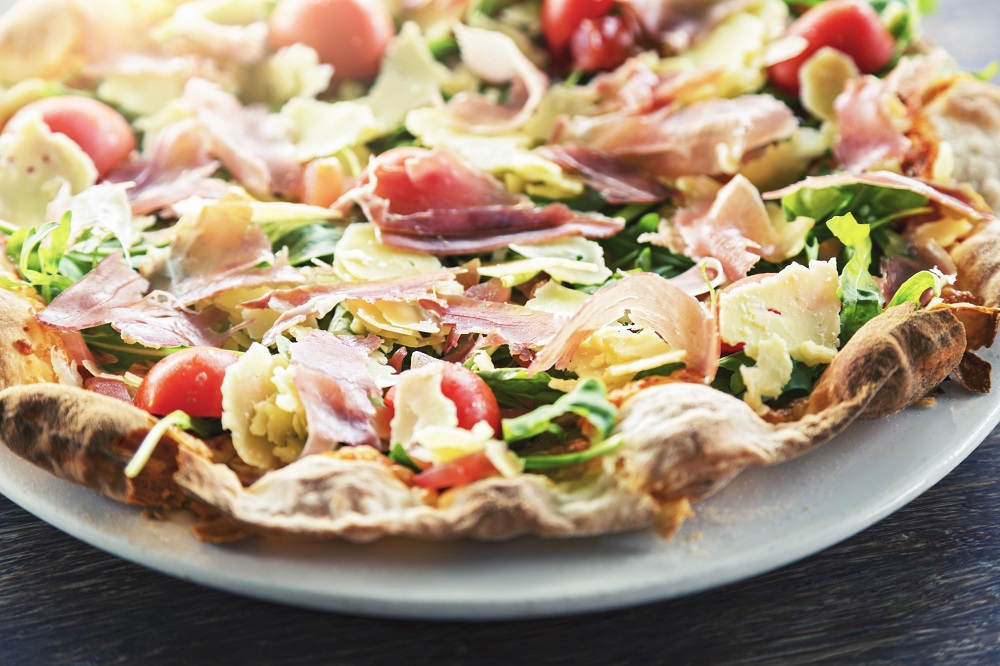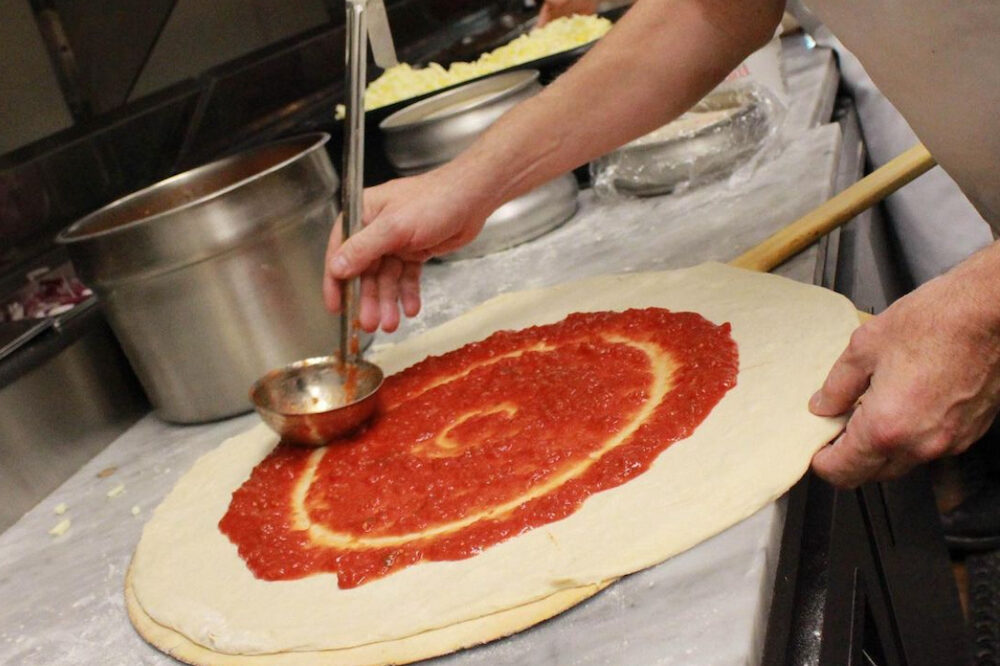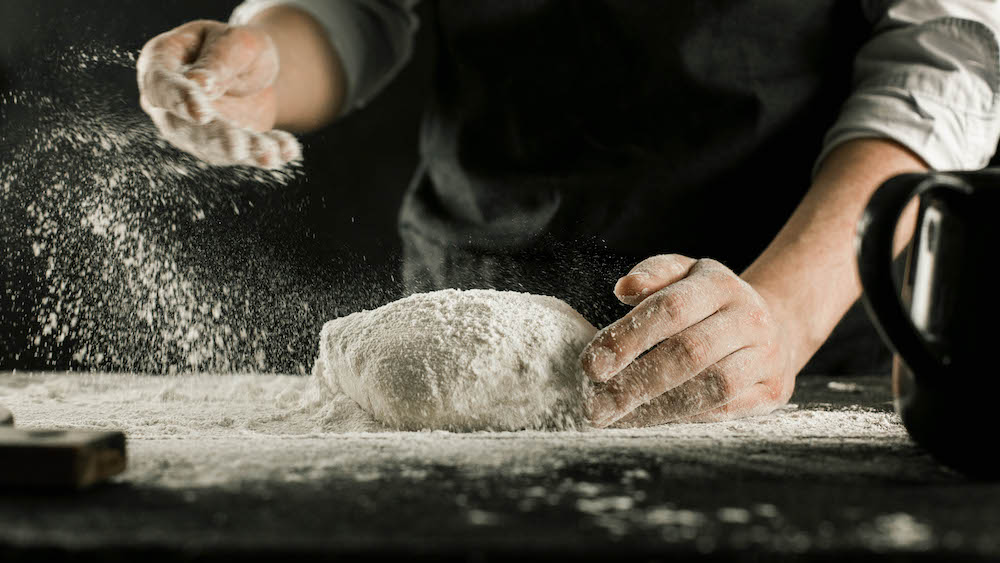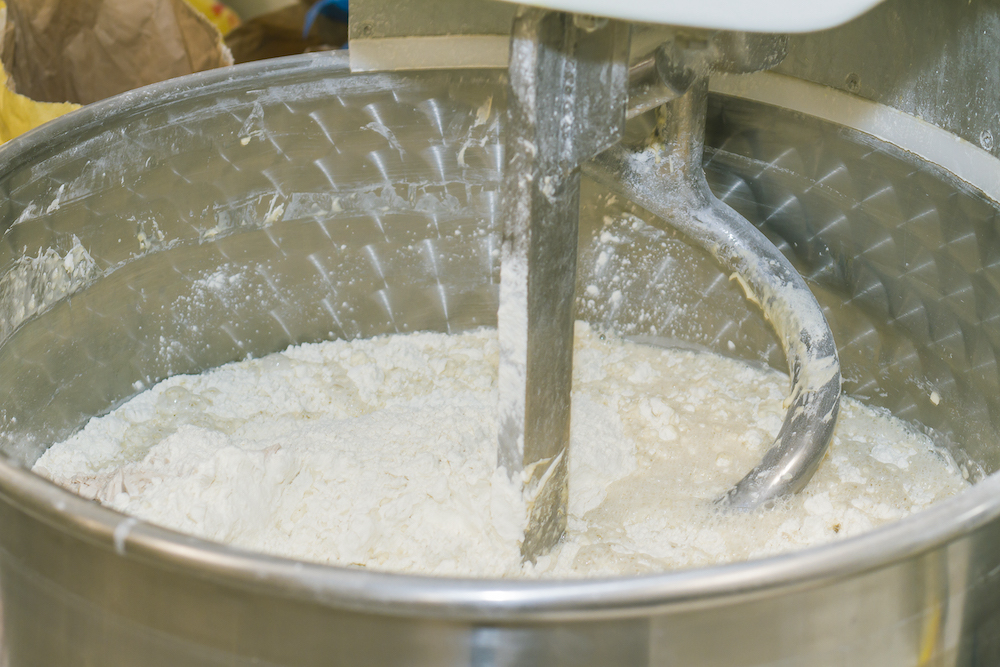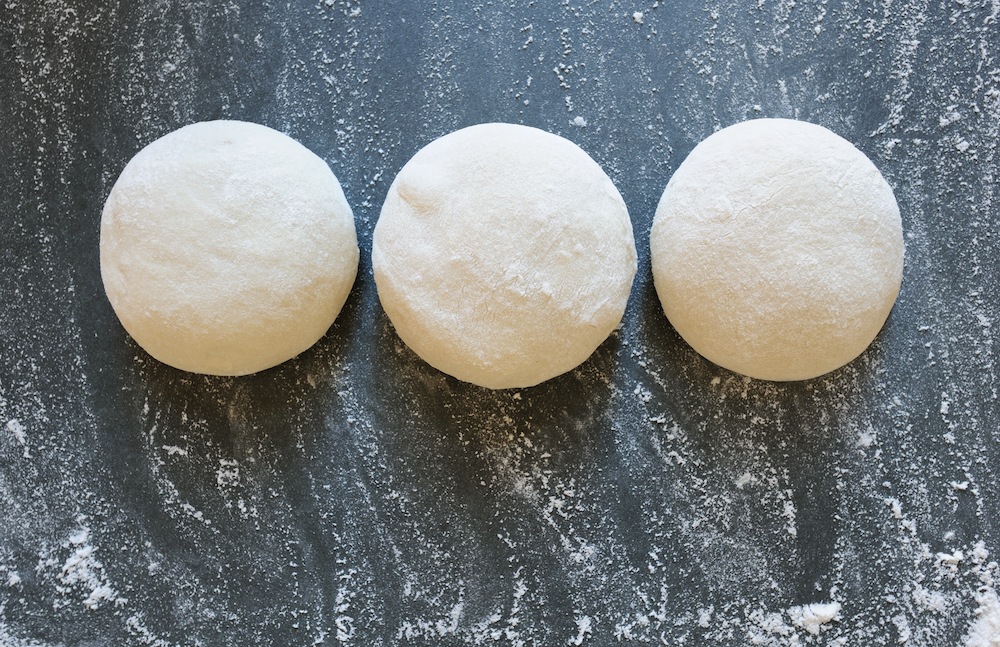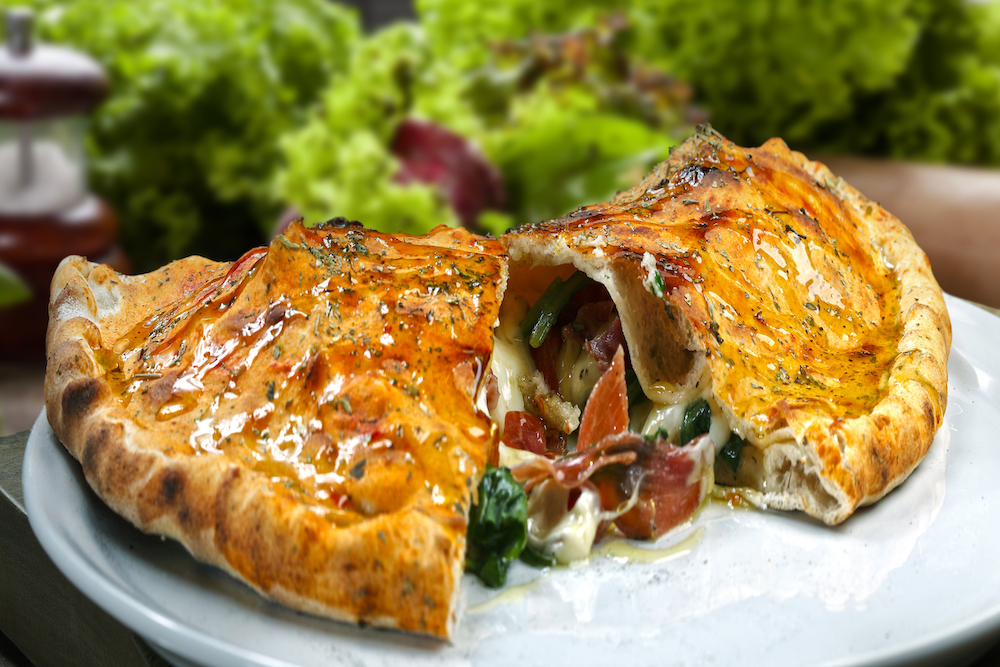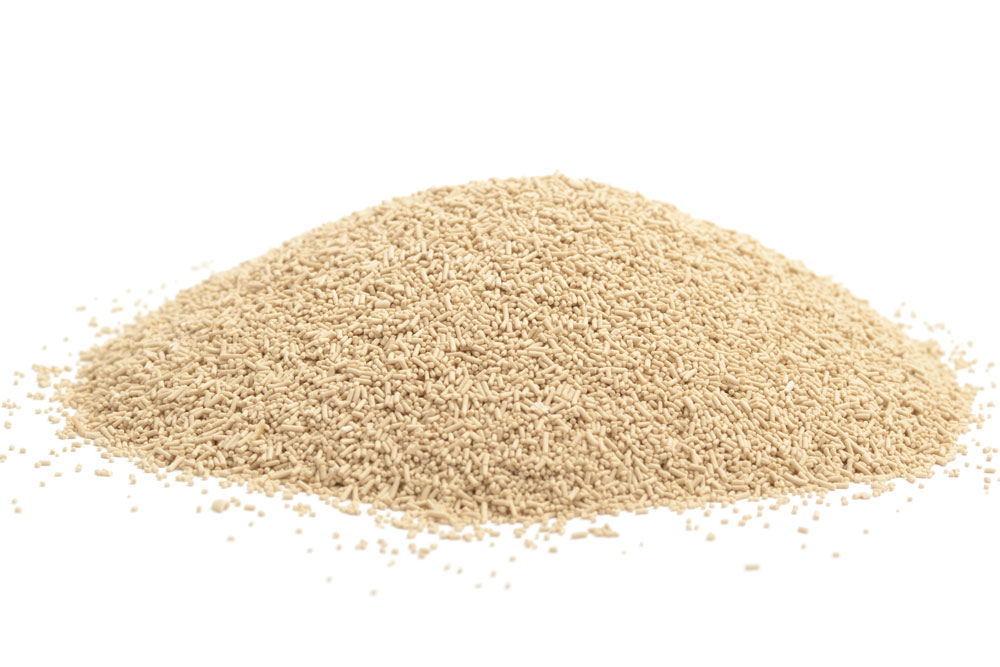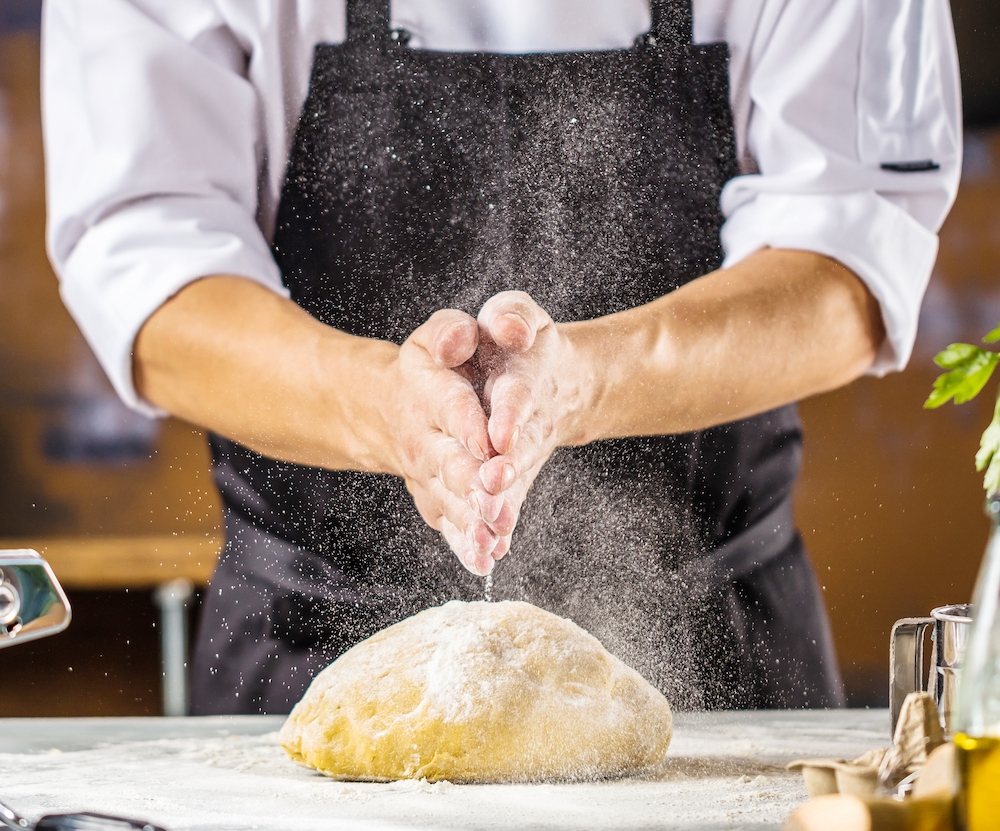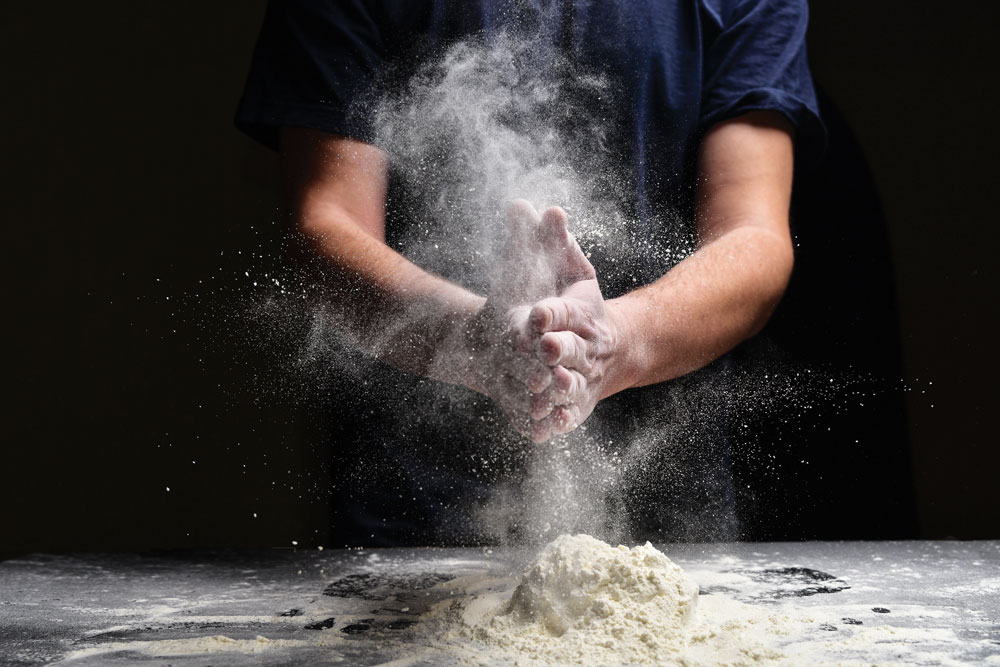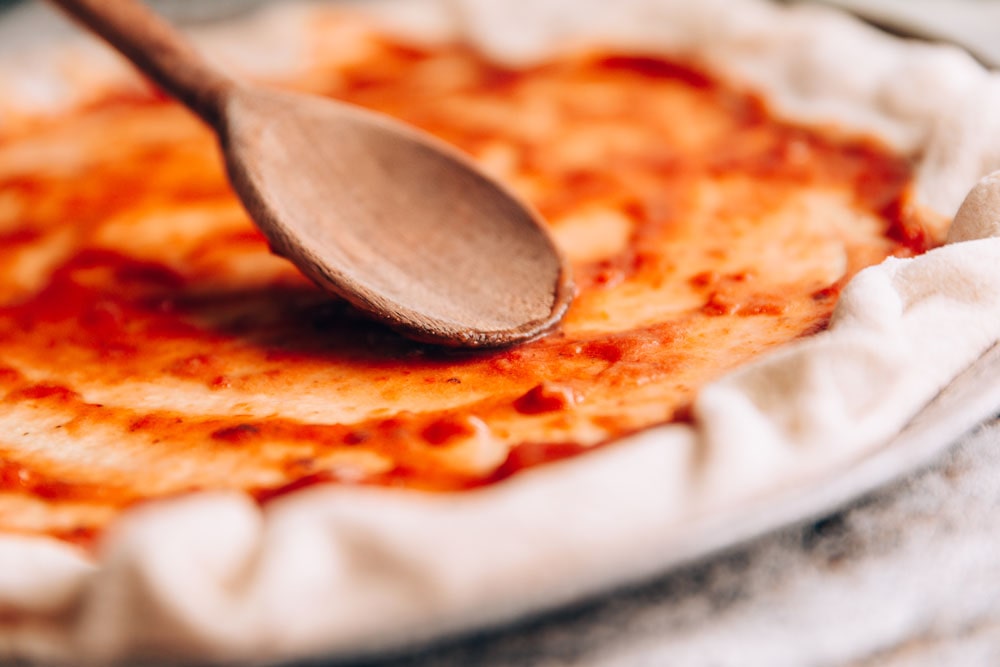If you’ve ever tried to use a dough press to form skins for a crispy-thin or cracker-crust pizza, you may have realized the dough becomes too stiff to press out. But there’s a way around that problem.
The key is to have a soft and relaxed dough consistency at the time of pressing. Unfortunately, the low dough absorption used in making dough for a crispy- or cracker-type crust is highly counterproductive. The solution is to either ferment the dough until it is sufficiently relaxed and extensible for pressing or to add a reducing agent to the dough.
First, the fermentation approach: This is best accomplished by allowing the dough to ferment sufficiently long to develop the desired pressing characteristics. If you are cold-fermenting the dough, this might mean allowing the dough to remain in the cooler two or more days (which will also contribute to a great-tasting crust). But if you are not set up to allow for that kind of fermentation time, you can experiment with higher finished-dough temperatures to achieve more fermentation in a shorter time. Another trick that sometimes works well is to simply remove the dough from the cooler and allow it to remain at room temperature for a longer time (normally two to four hours) before pressing.
Related: The spirit of St. Louis-style pizza
The other approach requires the use of a reducing agent (an additive used for making a dough softer and more extensible) such as L-cysteine (PZ-44), dead yeast (Reduce 190), deodorized vegetable powder/onion and garlic (Basic Natural), or even just the addition of your “off-the-shelf” onion and/or garlic powder if you don’t mind the flavor contribution.
These products will all work (though some better than others) to give you a dough consistency that is ready for pressing usually within two hours of mixing the dough. However, it is possible to experiment with the amount used to find a level which will provide for up to 24 hours of cold fermentation time without turning the dough into something resembling a thick pudding. The key here is to experiment with the reducing agent to find a level that will give you the dough characteristics needed for pressing while still fitting into your pizzeria operation reasonably well.
As mentioned before, it is possible to use a dough press for this type of pizza, but it will take some work on your part to find the product that is best suited to your needs and that will fit into your operation and pizza concept. While there are significant differences between the reducing agents mentioned, the L-cysteine (an amino acid/protein building block) and dead yeast/glutathione (an amino acid/protein building block) are very fast-acting and have the capacity to completely liquefy a dough if used incorrectly. The vegetable powder-based products are gentler but also have a limited softening effect upon the dough, which, in some cases, might make them easier to use. Do some experiments to figure out which approach works best for you!
The late, great Tom “The Dough Doctor” Lehmann was a longtime contributor to PMQ and served as the director of bakery assistance at the American Institute of Baking.



